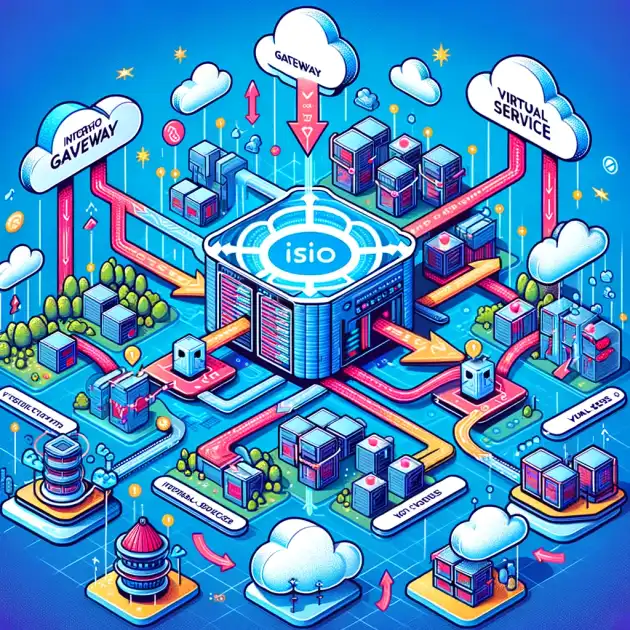In the world of Kubernetes and service meshes, Istio has emerged as a frontrunner, offering a powerful suite of tools designed to manage, secure, and monitor microservices. Among its many features, the concepts of Gateway and Virtual Service stand out for their roles in simplifying and controlling the flow of traffic into and within a service mesh. This blog post dives into what Istio's Gateway and Virtual Service are, how they work, and why they're essential for modern cloud-native applications.
What is Istio?
Before we delve into the specifics of Gateway and Virtual Service, let's briefly touch on Istio itself. Istio is an open-source service mesh that provides a uniform way to connect, secure, control, and observe services. It operates at the application layer of the network and allows you to implement policies and traffic rules without changing the code of your applications. This decoupling of management from application development is a key benefit of using Istio.
Istio Gateway: The Entry Point
The Istio Gateway is a dedicated configuration resource designed to handle inbound and outbound traffic for your mesh. Think of it as the doorkeeper or the entry point to your cluster. It's configured at the edge of the mesh to enable exposure of services to external traffic, essentially controlling access to your services from outside the Kubernetes cluster.
How Does Gateway Work?
The Gateway resource uses a combination of standard routing rules and Envoy proxy configurations to manage external access to the services within a service mesh. By specifying different Gateway configurations, you can control protocol (HTTP, HTTPS, TCP, etc.), load balancing, TLS settings, and more, providing a flexible way to manage ingress and egress traffic.
Use Cases for Istio Gateway
- Secure Traffic Management: Enforcing HTTPS at the entry points to your services.
- Host-based Routing: Directing traffic to different services based on the requested host.
- Load Balancing Configuration: Adjusting the load balancing strategy and settings for incoming traffic.
Istio Virtual Service: Fine-grained Traffic Management
While the Gateway deals with traffic at the edge of your mesh, the Virtual Service allows for more granular control over the traffic inside the mesh. It defines the rules that control how requests are routed to various versions of a service or to different services altogether.
How Does Virtual Service Work?
Virtual Services work by specifying hosts and defining the routing rules for those hosts. These rules can include matching criteria (such as URI paths, HTTP headers, etc.) and the corresponding routing destinations. Virtual Services can be used to direct traffic to different service versions (useful for A/B testing or canary deployments) or to add retries, timeouts, and fault injections.
Use Cases for Virtual Service
- Traffic Splitting: Dividing traffic among different versions of a service for testing or rollout purposes.
- Request Routing: Applying specific rules to route traffic based on headers, paths, or other attributes.
- Resilience Features: Implementing retries, timeouts, and circuit breakers to improve the reliability of service communication.
Combining Gateway and Virtual Service
Using Gateway and Virtual Service together allows for a robust and flexible routing mechanism within Istio. A common pattern involves defining a Gateway to handle ingress traffic and then using Virtual Services to fine-tune how that traffic is routed to services within the mesh. This combination provides the control needed to manage traffic flow efficiently, whether entering the mesh from the outside world or moving between services internally.
Conclusion
Istio's Gateway and Virtual Service are powerful tools that offer granular control over traffic management in a service mesh environment. By understanding and leveraging these features, developers and operators can ensure that their applications are secure, resilient, and scalable. Whether you're looking to expose services to the outside world, manage traffic flow within your mesh, or implement sophisticated traffic routing rules, Istio provides the capabilities needed to meet these requirements with ease.
